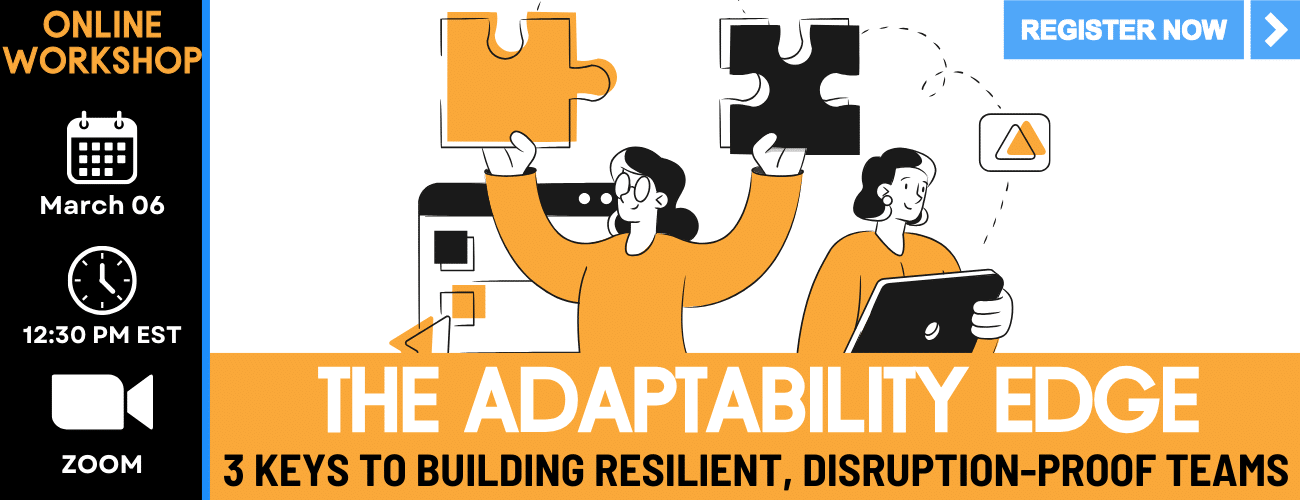In times of disruption, your leadership style doesn’t stay hidden—it gets revealed.
From local governments to multinational organizations, we’re witnessing a widening spectrum of leadership behaviors. The pressure to respond to massive change is real—and no sector or country is exempt.
AI disruption, hybrid work models, and ongoing restructuring have created an era of relentless complexity. According to a recent Pew study, 52% of workers fear AI may threaten their jobs. Gallup reports that leaders are 56% more likely than individual contributors to experience disruptive change in their organizations, yet 47% of C-suite executives admit feeling unprepared to lead through rapid technological change.
Meanwhile, McKinsey finds that 70% of change efforts fail, often because leaders underestimate the emotional and behavioral toll disruption takes on their people. Add in the fact that only 1 in 3 managers is actively engaged at work, and it’s no wonder teams are burning out and losing trust.
Under pressure, default behaviours take over. When stress runs high, even skilled leaders snap back to familiar patterns—micromanaging, decision-hoarding, disengaging. These reactive behaviors often feel efficient, but they usually cause more friction than forward motion. Clarity erodes. Psychological safety shrinks. Trust begins to fray. Tempers start to flare.
What worked in steady times simply won’t carry us through this era of accelerated disruption. What’s needed now isn’t just more strategy—it’s more self-awareness.
Reactive or Resilient: It’s Your Choice
When the stakes are high, many leaders become reactive, defaulting to control, speed and doing what used to work for them well more than ever. These approaches might feel like you’re being productive, but you’re fuelled by fear and just running faster in a hamster wheel that’s not getting you or your team anywhere.
Resilient leaders, by contrast, don’t operate from fear. They pause. They reflect. They see present conditions through curiosity and not fear. They respond to what’s needed, not just just to what’s urgent.
This is more than emotional intelligence. It’s what I call adaptive presence—the ability to stay grounded and flexible in moments of pressure, while guiding others through uncertainty with clarity and trust.
Reactive leaders are driven by instinct. Resilient and adaptive leaders are driven by intention.
Three Shifts to Build Adaptive Presence
If you’re moving fast but feeling scattered or find yourself grabbing for control when uncertainty spikes, here are three places to begin:
1. Pause Before Pivoting
When your nervous system is in fight-or-flight, judgment gets clouded. Start by building in a five-second pause before responding in high-pressure conversations. Creating a moment of silence and reflection in a meeting, conversation or email before you hit the send button can completely shift your tone and energy. That pause allows thoughtful strategy to rise above reactive pressure.
2. Model Curiosity, Not Control
In tense moments, teams often go quiet. Silence doesn’t mean alignment. It often means fear. Instead of offering answers, ask better questions:
“What might we be missing?”
“What’s not being said that we need to hear?”
Asking open-ended questions signals that diverse perspectives aren’t just tolerated, but they are welcome and essential.
3. Check Your Impact, Not Just Your Intent
You might just think you’re being efficient and don’t have time to do anything other than knock off tasks on your huge to-do list. But taking the time to consider how your behaviour and energy impacts others will deliver huge ROI. I’ll never forget one of the lessons I learned from my first coaching mentor over 20 years ago. She said that how you show up in a room speaks volumes, whether you open your mouth or not.
The most resilient leaders are feedback-driven, not ego-driven. Check in with people. Connect with them as fellow human beings trying to navigate a complicated world, just as you are. Resilient leaders who have adaptive presence care just as much about how people feel as they do about what gets done.
Under pressure, your team takes cues from you. If you model reactivity, control, or distance, your people will mirror it. But if show up with adaptive presence, you send unwavering signals of steadiness, curiosity, and connection that give people something to hold on to when times feel turbulent.
This moment calls for more than command—it calls for consciousness.
So ask yourself:
What am I modeling when the pressure is on?
Because in uncertain times, the presence with which you lead matters just as much, if not more than what you do.
If you’d like support with leadership within your organization or team, let’s connect to explore whether the Adaptive Advantage (™) program or Level Up Leadership executive coaching program can help!”




